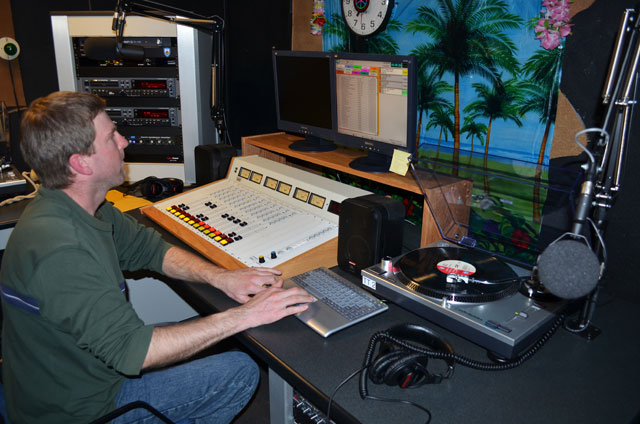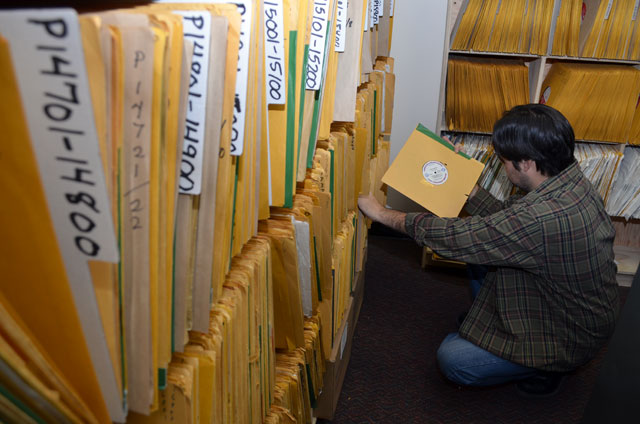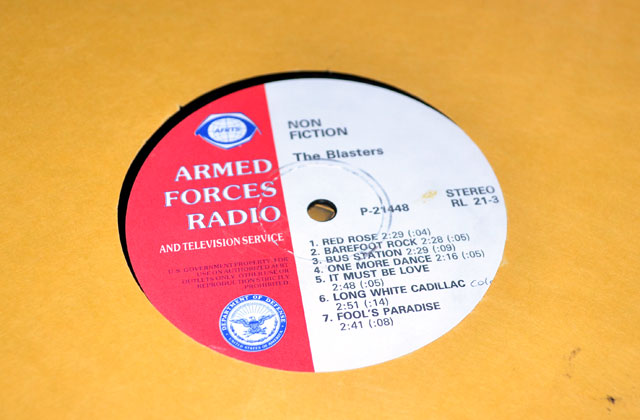|
Turn up the volumeMcMurdo radio station goes high-tech but retains retro vinyl collectionPosted February 24, 2012
Army Sgt 1st Class Bart Schrum had never been to Antarctica, but he was one of two people assigned to upgrade the civilian radio station used by the U.S. Antarctic Program (USAP) There was one odd thing about the job. The schematics called for a couple of turntables to play vinyl records. “There shouldn’t be turntables on there,” he recalled thinking. It turns out there was nothing wrong with the drawings. McMurdo just happens to boast one of the largest — and possibly one of the last — record collections of any media outlet overseen by the Defense Media Activity (DMA) “I’ve never seen vinyls until I got here,” said Interior Communications Electrician 2 Jessica Lopez, who, along with Schrum, spent about three weeks in McMurdo earlier in the 2011-12 field season to install a fancy new digital-analog radio station system. Two people from DMA typically come down every year to McMurdo for routine maintenance on the audio and visual systems, as well as for special projects like the radio station upgrade. DMA is the one-stop-shop for all communications and media under the Department of Defense And, of course, the military supports the TV and radio station operations. The relationship dates back to the 1950s when the U.S. Navy was assigned to run all of the day-to-day operations for research in the Antarctic — a job now done mostly by civilian contractors.
The original radio station was on the air as early as 1963 under the call sign KMSA, according to Billy-Ace Penguin Baker, a retired Navy radioman who, between 1962 and 1980, spent four winters and 15 summers in Antarctica as part of Operation Deep Freeze. By 1971, the call sign was WASA, for W Antarctic Support Activities, and by 1975, it was AFAN (American Forces Antarctic Network). “During my first two winters [1963 and 1967], the radio station was located in the same building with the bowling alley,” Baker said, referring to a structure that was torn down just a few years ago. “In those days the retail store, the barbershop, and beer sales were also located in that building. “During that timeframe there [were] no disc jockeys, and only music tapes were played. During the winter, we moved it up to the transmitter site and the guys up there changed the tapes,” he added. Eventually, the radio station was moved to its current location in Building 155, with the record collection tucked into a nearby room. Building 155 is also home to McMurdo’s dining hall and kitchen, retail store, along with offices and residential dorm rooms. Today, there are three radio stations (and several TV stations). The original radio station is now Ice 104.5 FM, boasting 50 watts of power, about enough to send a signal maybe 10 miles onto the ice shelf, if any seals are tuning in. The new radio station setup boasts some 38,000 digital songs, allowing the station’s 30-plus volunteer DJs to click and drag their sets into a queue. The library includes everything from rock to country to rap. “I don’t have to search for my music. It’s all there in a row. Everything I need is there. It really eases the pain as far as what a DJ has to do in terms of research,” Schrum said of the new software. On a Tuesday night, volunteer DJ Tristan Eames of New Hampshire was in the radio station, working out the kinks of the new system by queuing up a song by the Kinks. He was particularly excited to spin some tunes on the new turntables. “I’m going to play Nirvana on vinyl, because how often do you get to play Nirvana on vinyl?” said Eames, who works in supply for the kitchen in his first year on the Ice. “I was blown away by the records. … It’s a great way to explore music.” Rumor has it that at least part of the vinyl collection came from Vietnam, and that many of the records were played by none other than Adrian Cronauer on his radio show in Saigon in 1965-66. Cronauer was the music DJ who bucked the military brass, as portrayed by Robin Williams in the 1987 comedy “Good Morning, Vietnam.” In 1997, The Antarctic Sun Schrum travels all around the world in support of media operations. He said he probably hasn’t seen a vinyl record collection since the late 1990s, when most radio stations had switched to CDs and digital automation. “They started destroying all of the records, because that’s what you have to do to them. It’s all copyrighted material,” he explained. “I don’t think I’ve ever been to another facility that has a record collection. … You won’t see a library like this.” Added Lopez, “I think the DJs are going to have fun in here.”
|



For USAP Participants |
For The Public |
For Researchers and EducatorsContact UsU.S. National Science FoundationOffice of Polar Programs Geosciences Directorate 2415 Eisenhower Avenue, Suite W7100 Alexandria, VA 22314 Sign up for the NSF Office of Polar Programs newsletter and events. Feedback Form |




